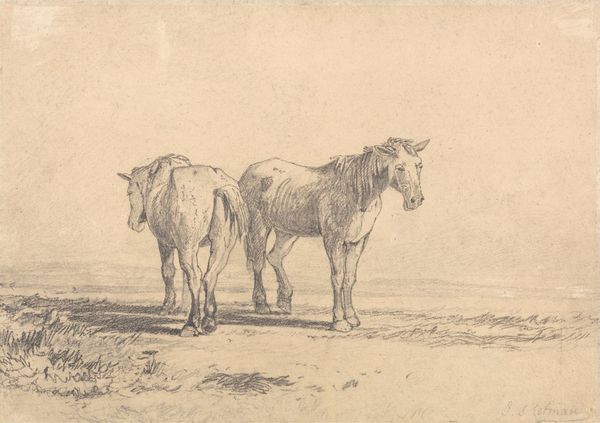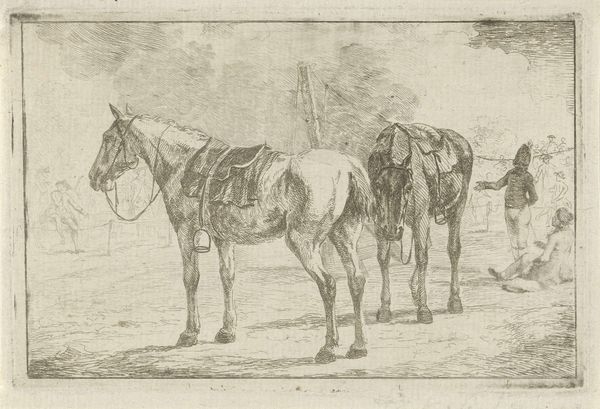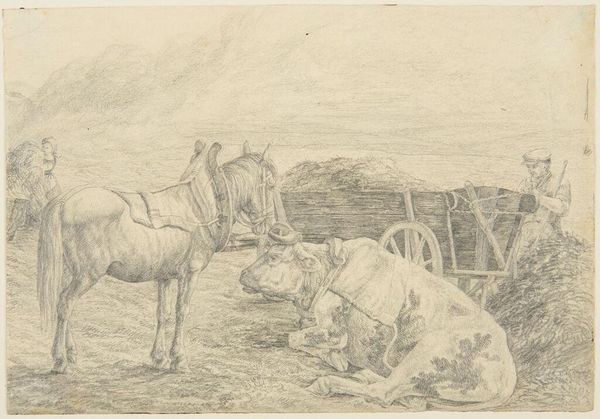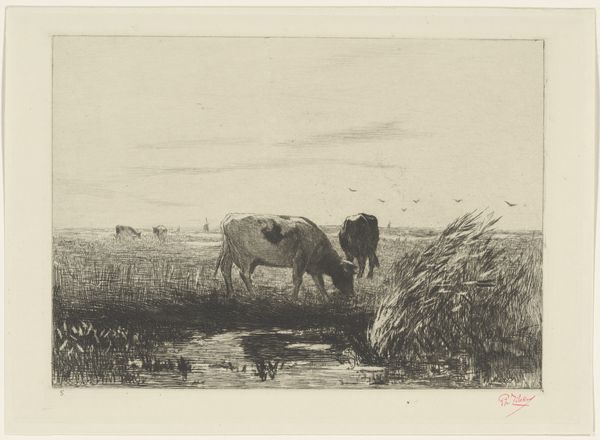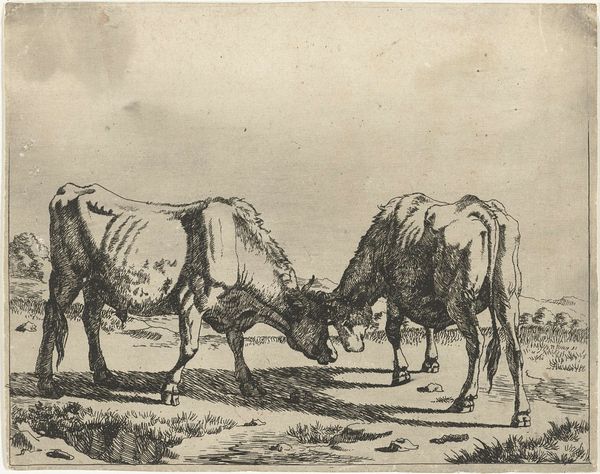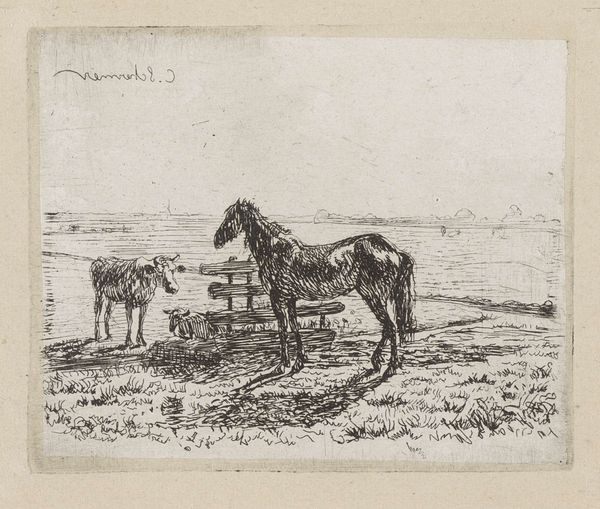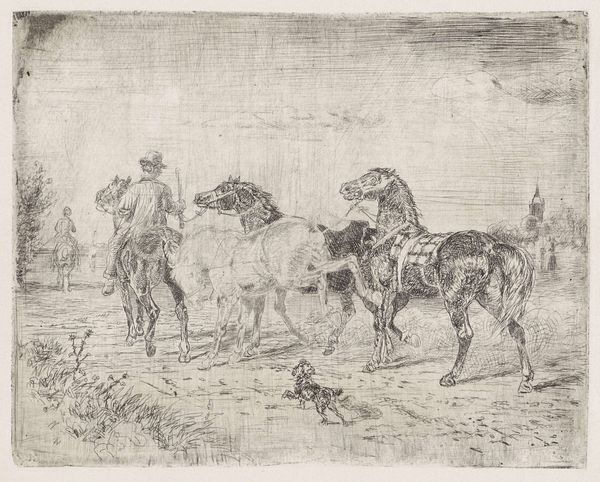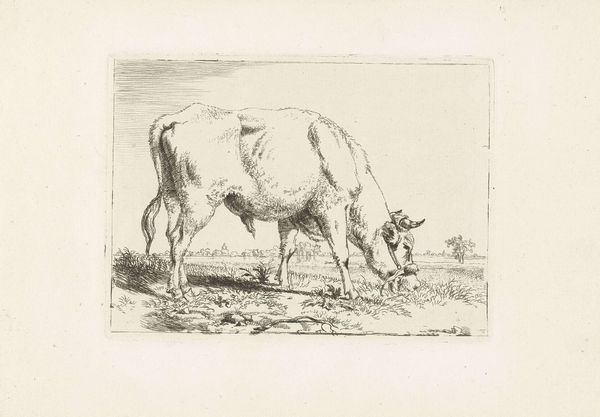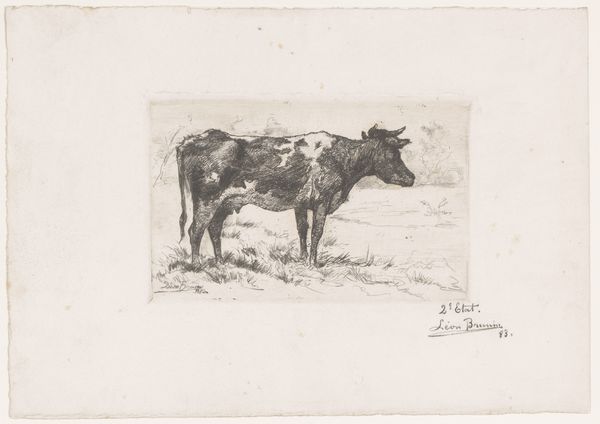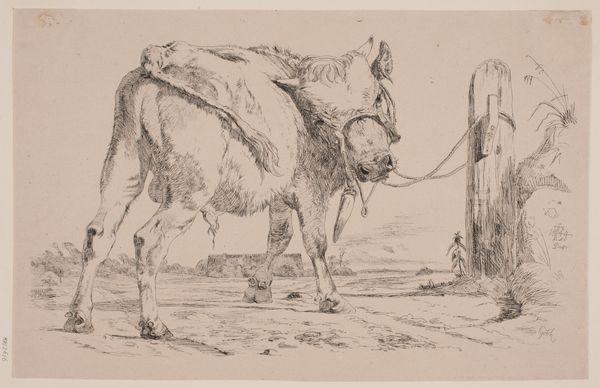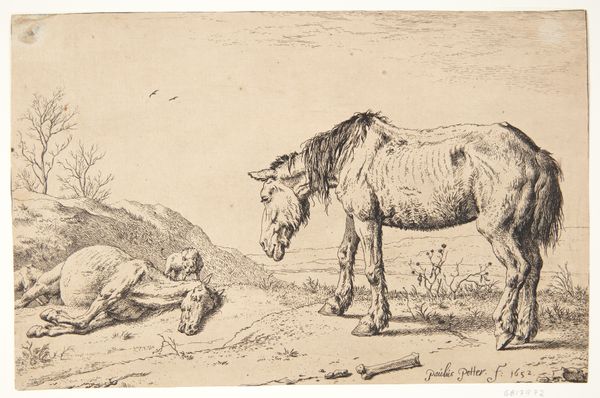
a) Horses at Rest (recto); b) Horses at Rest (verso) (Sosta di cavalli) c. late 19th century
0:00
0:00
# print
#
landscape
#
realism
Dimensions: plate: 14.4 × 19.1 cm (5 11/16 × 7 1/2 in.) sheet: 14.8 × 19.5 cm (5 13/16 × 7 11/16 in.)
Copyright: National Gallery of Art: CC0 1.0
Editor: So, here we have Giovanni Fattori's print, "Horses at Rest," from the late 19th century. It depicts two horses standing in a field, rendered in a delicate, almost ethereal style. There’s a sense of quiet and perhaps even fatigue emanating from the piece. How do you interpret this work? Curator: I find the beauty of this print not just in its pastoral scene, but in understanding its materiality. Notice the etched lines, the artist’s labor made visible. It reflects the daily life and the work of rural laborers through its chosen materials. Consider the physical work the horses and rural workers invested, paralleled to Fattori's physical artistic craft using those very working animals as subject matter. Does the limited tonal range speak to any scarcity of resources? Editor: That's an interesting point! I was initially focused on the overall feeling of tranquility, but now I see the labor aspect much more clearly. Does the printmaking process, in itself, say something about mass production or access to art? Curator: Precisely. Etching allows for multiples, making images more accessible. Was Fattori consciously engaging with this wider potential audience? How did the production impact or benefit working class Italian communities? What type of paper was utilized for the printmaking? Understanding those elements allows for deeper insights into artistic intention and reception. Editor: I never really thought about how the *making* of the artwork contributes to the whole story, but it changes my view completely! Now it is not only about a nice landscape, but a record of its production. Curator: Absolutely! Paying close attention to materials and processes helps to contextualize the artwork historically, and opens up considerations of both the artists' labor and its economic circumstances. Editor: This really helped me to look beyond the image to consider the artistic practice. Thanks so much.
Comments
No comments
Be the first to comment and join the conversation on the ultimate creative platform.
